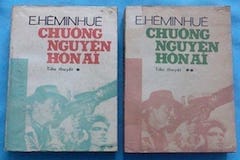The code is written in C++ base on Clutter 1.2.4 library. It shows basic widgets: tabbed container, scrolling container, list box, combo box, check box, edit box, button, label, radio button…
 his is my personal project in which I tried to evaluate some new ideas and concepts in using 3D techniques for GUI (Graphical User Interface). It’s quite tiny indeed (about 6000 LOC – line of code), all written by myself in about a month (mostly in my free times at weekends). So please don’t blame me on some un-completed or un-polished features, they are just for testing the ideas only. I would try to examine the trend of applying 3D graphics to GUI, but first, let have a look at the video below.
his is my personal project in which I tried to evaluate some new ideas and concepts in using 3D techniques for GUI (Graphical User Interface). It’s quite tiny indeed (about 6000 LOC – line of code), all written by myself in about a month (mostly in my free times at weekends). So please don’t blame me on some un-completed or un-polished features, they are just for testing the ideas only. I would try to examine the trend of applying 3D graphics to GUI, but first, let have a look at the video below.
1. The first thing to consider is not 3D engines or hardwares, it is about usability. Many traditional (2D) GUI out there are already complex and obstructive. GUI is about information presentation and presentation should be really simple and clear so that even my grand mother can understand and use. I’ve been seeking, trying to explore many new ways invented to represent information in 3D (or 2.5D) space, and I could say only a very very small percent of them could make a usable value. Users have long been familiar with 2D, and yet 3D hasn’t been very much persuasive.
2. 3D hardwares can be categorized into 3 groups (as listed on the left), and the 3D engine can be configured to off-load calculations to hardware. With the 1st type of device, only bitmap operations could be off-loaded. With the 2nd type of device, many drawing operations (the path_xxx functions) can be off-loaded. The 3rd type of hardware is most valuable since we can have its finish for ourselves a lot of work.
It’s important to understand the target device our software stack would be running on. If it is an out-date machine with just some blitters, we should use paint-like (aka: bitmaps) operations, while on most modern PC, draw-like (aka: 2D vector) operations are more encouraging. While bitmaps may offer nicer and more customizable GUI, the cons is it lacks the scalable ability that vector has.
3. The last is about software implementation. Many of the graphics concepts are first introduced in software, which then embedded to hardware, which then standardized by software (like OpenGL or DirectX) again. Thus, many elements of a graphics pipeline is the production of a long history of interactive evolution. A graphics pipleline is not a general framework, it depends on very detailed, in-depth techniques to be operational in real-world application.
Game & graphics are the domains where most formal software methods would easily failed. 3D graphics developers should have good knowledge on graphics in general (bitmap and vector drawing), geometry, linear algebra & discrete maths, deep understanding on data-structures and algorithms… are strong pluses, advanced tips & tricks in coding and optimization is a must (game & graphics programming has always been a hell of tricks from the age of dawn) and finally good understanding on 3D techniques (model, scenegraph, projecting, shading, clipping, lighting, effects…)

 ây rung cảm tâm hồn nhiều khi không cần đến âm nhạc tinh tế và phức tạp. Chỉ một giai điệu, một lời hát đơn giản nào đó cũng đủ để gợi lại cả một khung trời kỷ niệm, ước mơ xa xưa… Chẳng có gì phải xấu hổ khi kể rằng bạn đã từng yêu một giai điệu, một khoảnh khắc nào đó của quá khứ, để rồi mãi cho đến tận hôm nay mới biết bản nhạc đó tên gì, do ai hát!
ây rung cảm tâm hồn nhiều khi không cần đến âm nhạc tinh tế và phức tạp. Chỉ một giai điệu, một lời hát đơn giản nào đó cũng đủ để gợi lại cả một khung trời kỷ niệm, ước mơ xa xưa… Chẳng có gì phải xấu hổ khi kể rằng bạn đã từng yêu một giai điệu, một khoảnh khắc nào đó của quá khứ, để rồi mãi cho đến tận hôm nay mới biết bản nhạc đó tên gì, do ai hát!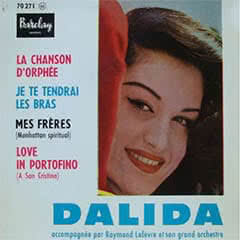
 e are building something like
e are building something like  ản nhạc này
ản nhạc này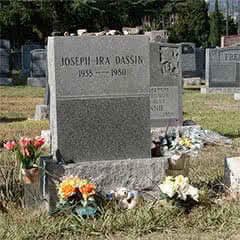
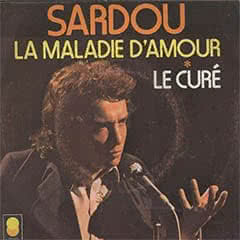
 a maladie d’amour… tựa này dịch làm sao mới phải nhỉ, Căn bệnh tình yêu?? Nôm na nhưng chính xác phải là: Ốm tương tư… 😀 Dịch nghĩa phần lời:
a maladie d’amour… tựa này dịch làm sao mới phải nhỉ, Căn bệnh tình yêu?? Nôm na nhưng chính xác phải là: Ốm tương tư… 😀 Dịch nghĩa phần lời: 
 ùng một tác giả: Kokoro No Tomo (lời Việt: Khi cô đơn em gọi tên anh), Koibito Yo (lời Việt: Người yêu dấu ơi), Ai No Shinkinro (lời Việt: Sa mạc tình yêu), Ribaibaru (lời Việt: Trời còn mưa mãi), Nokibiri (lời Việt: Tàn tro)… Xem ra nhạc Việt mượn của cô ca sĩ Mayumi Itsuwa này nhiều thật. Nhớ khi nhỏ, khoảng cỡ lớp 7, lớp 8, chưa biết bài gốc tiếng Nhật, thích bài Ngàn năm vẫn đợi này lắm, người khác thì cứ bảo: chỉ là thứ nhạc vàng đặt lời nhảm nhỉ… Giá như người ta hiểu nhạc không phải là lời nhỉ! Nó là cái intangible formation: 1 1/2 2 1/2 2!
ùng một tác giả: Kokoro No Tomo (lời Việt: Khi cô đơn em gọi tên anh), Koibito Yo (lời Việt: Người yêu dấu ơi), Ai No Shinkinro (lời Việt: Sa mạc tình yêu), Ribaibaru (lời Việt: Trời còn mưa mãi), Nokibiri (lời Việt: Tàn tro)… Xem ra nhạc Việt mượn của cô ca sĩ Mayumi Itsuwa này nhiều thật. Nhớ khi nhỏ, khoảng cỡ lớp 7, lớp 8, chưa biết bài gốc tiếng Nhật, thích bài Ngàn năm vẫn đợi này lắm, người khác thì cứ bảo: chỉ là thứ nhạc vàng đặt lời nhảm nhỉ… Giá như người ta hiểu nhạc không phải là lời nhỉ! Nó là cái intangible formation: 1 1/2 2 1/2 2!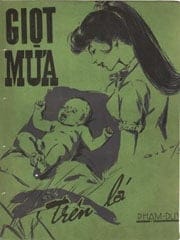
 ome interesting recently – collected video documents: Phạm Duy with Steve Addiss on his song: Giọt mưa trên lá (the rain on the leaves) and Phạm Duy with the legendary
ome interesting recently – collected video documents: Phạm Duy with Steve Addiss on his song: Giọt mưa trên lá (the rain on the leaves) and Phạm Duy with the legendary  xcerpts from the
xcerpts from the 